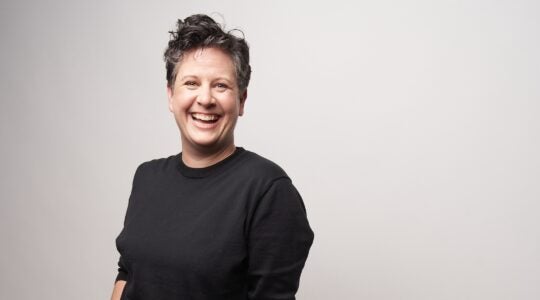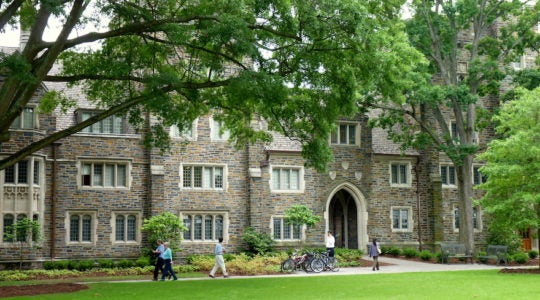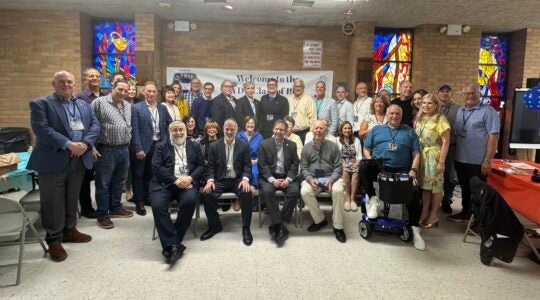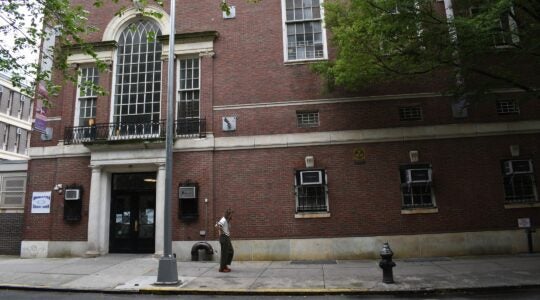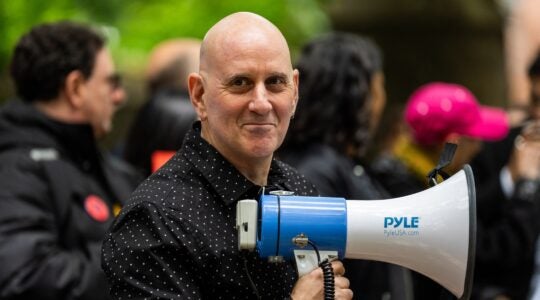Growing up along the shores of the Mediterranean, where a football is round and the sport is played by men in shorts on a grass-covered pitch, you don’t learn much about the huddling, helmeted brand of the NFL game beloved on the bayou.
But Amir Gwirtzman is a quick learner.
Earlier this year, a few days before the Super Bowl, this musical son of Tel Aviv stood on the bima of Temple Sinai, the only Jewish house of worship in the southwest Louisiana town of Lake Charles, a score of instruments at arm’s reach. One of Israel’s leading jazz musicians, the multi-reed player was on 4 ½-month swing through the American South as a kind of cultural ambassador for the Jewish state, and he was giving a benefit performance for earthquake victims in Haiti. The sanctuary was packed. “All religions, all backgrounds,” he says.
Not a religious man, Gwirtzman had a moment of inspiration during his evening of eclectic, jazz-and-blues-and-other-styles performing.
He picked up a baritone saxophone and starting playing a few notes from “When the Saints Go Marching In,” the unofficial anthem of the New Orleans Saints, who were about to make their first appearance in the National Football League’s championship game. The once-woeful team had become a rallying point for New Orleans in the four-plus years since a hurricane named Katrina devastated the city. The whole state was excited.
The crowd in Temple Sinai started singing and clapping along. Gwirtzman turned to clarinet, soprano sax and tenor sax. At the end of the tune, he showed off his chops a little by playing tenor and soprano sax simultaneously.
All the people, whites and blacks, teens and octogenarians, Gwirtzman says, were standing, swaying. “They were on their seats dancing and going crazy.”
The mayor of Lake Charles presented the Israeli visitor a key to the city that night, and named Gwirtzman an honorary citizen.
Gwirtzman’s performance in Lake Charles was as successful as the Saints’ in the Super Bowl — they brought New Orleans its first NFL title. He calls his concert there one of the highlights of the time he spent traveling through the South, performing and leading workshops.
A 44-year-old solo artist and member of Israel’s cross-genre Esta group, he spent his time in seven Southern states as part of a visiting artists program coordinated by the Goldring/Woldenberg Institute of Southern Jewish Life, which serves 13 states in the South, and underwritten by the Charles and Lynn Schusterman Family Foundation (schusterman.org).
His jaunt — he was based at the Institute, in Jackson, Miss., and drove from gig to gig — ended last month. Gwirtzman estimates he logged at least 6,000 driving miles. “I had a car, my GPS and an itinerary.”
Driving in the South reminded him of driving in Israel, he says. That’s not necessarily a compliment for road manners south of the Mason-Dixon Line.
Gwirtzman brought his one-man show to cities as large as Houston and Memphis and New Orleans, and as small as Hattiesburg and Tupelo and McComb and Indianola, all in rural Mississippi. His venues included synagogues and churches, schools and libraries, the B.B. King Museum and a café and a high school field house.
It was a “very spiritual” time, “a blessing,” he says from his home back in Israel, where he is at work on his next CD and concerts, his Web site and Facebook and YouTube postings. “The time was flying.” He calls his time in the South “a highlight of my career so far.”
The Institute (isjl.org) has sponsored visiting artists series in the region for a decade, each usually lasting for a few days. Gwirtzman’s was by far the most extensive, covering more than 60 appearances in 20 cities.
Gwirtzman, who studied at the Mannes College of Music here and has performed around the world, was brought here to serve as a musical ambassador for Israel and the Jewish people.
The Schusterman Visiting Artist Program, one of the largest such residency programs for Israeli artists in the United States, “leverages the deep impact of the artist-in-residence format to build a new bridge between Israel and the U.S.,” says Marge Goldwater, program director. “The experience broadens the awareness of the cultural sophistication of Israeli artists and art, particularly for audiences less familiar with Israel, and it appeals to young people not necessarily involved in the Jewish community but who are drawn in by the art content.”
Eight Israelis came to this country this spring under the aegis of the visiting artists program. Among them were filmmaker Ayelet Bargur, choreographer Idan Cohen and author Alex Epstein.
Gwirtzman was a natural choice, says Macy Hart, the Institute’s president and founder. “We wanted someone who is flexible, who is dynamic, who is a master musician, who is willing to travel.”
The Schusterman Foundation suggested Gwirtzman. “He fit the bill,” Hart says. “He brings audiences to their feet. He was a hit in every single place.”
Like in Lake Charles.
“The crowd loved him,” says Andy Muchin, the Institute’s director of programming.
Muchin says the director of a Lake Charles cultural organization that co-sponsored Gwirtzman’s concert there, told him “You would have thought we had won the Super Bowl.”
For many people in largely Christian small Southern communities, Gwirtzman was probably the first Jew, certainly the first Israeli they had met.
Picking up the southern dialect, he would open his shows with a “Good evening, y’all” or a “Howdy, y’all,” an instant sign of Sabra respect.
He encountered no hostility, no religious evangelizing, no political antagonism, no anti-Israel demonstrations or boycotts or comments.
“I was exposed to Southern hospitality,” invited to homes and Shabbat meals. “I made friends. I learned a lot.” He became addicted, he says, to fried green tomatoes.
Everywhere, people asked “curious” questions about Israel, about its culture and its day-to-day life.
In the South, Gwirtzman says, “there’s a lot of pro-Israel [sentiment] … a lot more than we think of. People are very religious there.”
He answered their questions. Mostly, he let his instruments do his talking.
Gwirtzman, who began playing the recorder at 7 and the clarinet at 9, now is the master of some two dozen reed instruments, many of them flutes. He picks up, and plays, different types of flutes wherever he travels. “A veritable United Nations of wind instruments,” the Southern Cultural Heritage Foundation said of him.
In Gwirtzman’s collection are the bagpipe, horns, Korean flute, Vietnamese flute, Armenian duduk, Irish penny whistle and three percussion instruments. He does bluegrass, klezmer, and rhythm and blues. The list goes on. “Music without borders,” he calls his style. “There’s a lot of influences.
“Through the music I convey a message,” Gwirtzman says. His message: music — especially flutes, his favorite instrument — is as universal, and as varied, as the people who make the music. “There are lots of things that bond us rather than divide us,” he told The Jerusalem Post. “Every nation and culture has its own pipe.”
He calls his show “Inhale-Exhale.”
“Everything in physical life is based on breathing,” he said in his Jerusalem Post interview. “It’s also a principle of yoga. It’s natural and calming, and sometimes difficult. The essence of life is in-and-out, like inhaling and exhaling.”
In Israel, Gwirtzman’s musical friends are jealous when he describes his experiences in the South. “Don’t you need a roadie?” a driver-assistant the next time you do it, they ask him.
There will be a next time, he says.
Gwirtzman and the Institute and the Schusterman Foundation are talking about a similar tour next year, concentrating on states he missed this time.
Next time, he says, he’ll know about U.S. football. “I’m already a Saints fan.”
E-mail: steve@jewishweek.org
The New York Jewish Week brings you the stories behind the headlines, keeping you connected to Jewish life in New York. Help sustain the reporting you trust by donating today.
